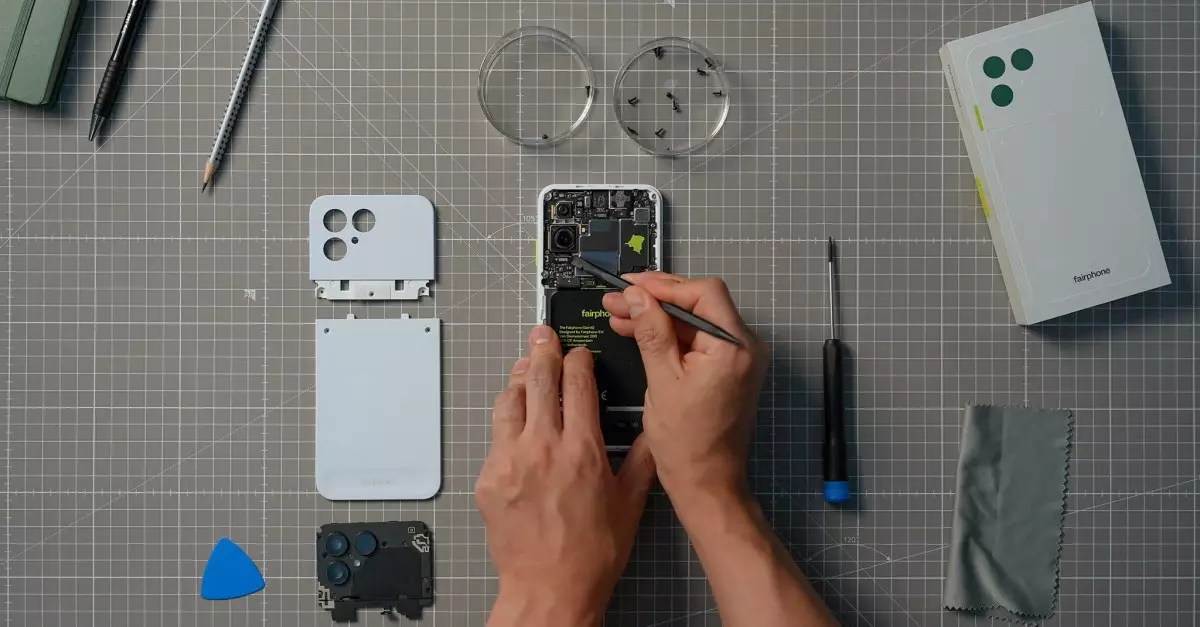The Fairphone 6 emerges as a bold statement in a market flooded with disposable smartphones. Breaking away from conventional design philosophies that prioritize sleekness at the cost of repairability, this device champions sustainability by making repair a core feature. Its consistent perfect score in iFixit’s teardown tests—five consecutive victories—cements Fairphone’s reputation as a leader in creating devices that are as serviceable as they are functional. Unlike typical flagship models that rely heavily on glued components, the Fairphone 6 demonstrates that durability doesn’t mean compromising on repairability. Instead, it underscores a paradigm shift: smartphones can be designed to last longer, reducing electronic waste and fostering a more responsible approach to technology consumption.
Design Innovation Meets Practical Repairability
What makes the Fairphone 6 particularly compelling is its balance of size, form, and modularity. Although smaller and more refined than predecessors, it maintains an impressive ease of repair. The phone’s external structure is secured with just seven screws, accessible using a simple T5 Torx screwdriver—a stark contrast to modern phones that often require proprietary tools or complex disassembly methods. While it no longer supports tool-free battery replacements, the swap process remains swift—taking mere minutes—thanks to the thoughtfully designed internal architecture. Fairphone’s approach prioritizes practicality over bells and whistles, focusing on empowering users to perform repairs themselves or through local service providers, which significantly extends the device’s lifespan.
Trade-offs and Technological Realities
However, this commitment to repairability isn’t without compromises. The Fairphone 6 sacrifices some high-end specs to prioritize sustainability. Its dual rear cameras are fairly basic by today’s flagship standards, and the Qualcomm Snapdragon 7S Gen 3 chipset struggles to match the power of premium processors, limiting its appeal to tech enthusiasts seeking cutting-edge performance. The USB 2.0 port, although a surprising omission in an era of fast data transfers, is possibly a cost or design choice related to energy efficiency or component longevity. Nevertheless, the 6.3-inch LTPO OLED display—offering a refresh rate of up to 120Hz—is a highlight, providing smooth visuals that challenge the device’s otherwise modest internal specs. This suggests that the Fairphone 6 is aimed more at users prioritizing sustainability and repairability than raw power.
Building a Future-Proof Commitment to Sustainability
An aspect that truly sets this device apart is the company’s forward-thinking support model. Fairphone’s guarantee of seven years of Android updates and eight years of security patches reflects a clear shift toward long-term usability. Coupled with a five-year warranty and a rewards-based loyalty program encouraging users to repair rather than replace, the company demonstrates an admirable commitment to reducing electronic waste. The inclusion of replaceable backplates and compatibility with a range of swappable accessories reinforces the idea that a phone can be a personal, enduring device rather than a disposable commodity. It also inspires a broader conversation about how the tech industry must evolve—embracing modularity not as a niche but as a standard.
Market Positioning and Future Implications
At a price point of €599 in Europe and $899 in the US—where it ships with Murena’s privacy-focused /e/OS—the Fairphone 6 positions itself as a premium choice for environmentally conscious consumers. While it doesn’t compete directly with flagship giants on raw performance, its value lies in its longevity and repairability. This signals a potential turning point in the industry, where sustainability becomes a selling point rather than an afterthought. The fact that Fairphone consistently achieves top marks in teardown tests reveals that sustainable design is not only technically feasible but also desirable, challenging other manufacturers to rethink their priorities.
The Fairphone 6 exemplifies how innovation isn’t solely about new features or faster hardware; it’s about fostering an ethos of responsibility and empowerment. By intentionally designing a phone that prioritizes repairability, durability, and long-term support, Fairphone is redefining what modern smartphones can be. It’s a testament to the power of conscientious design—showing that Elephants of the industry can learn new tricks: repair, reuse, and sustainability are the new benchmarks for success.

